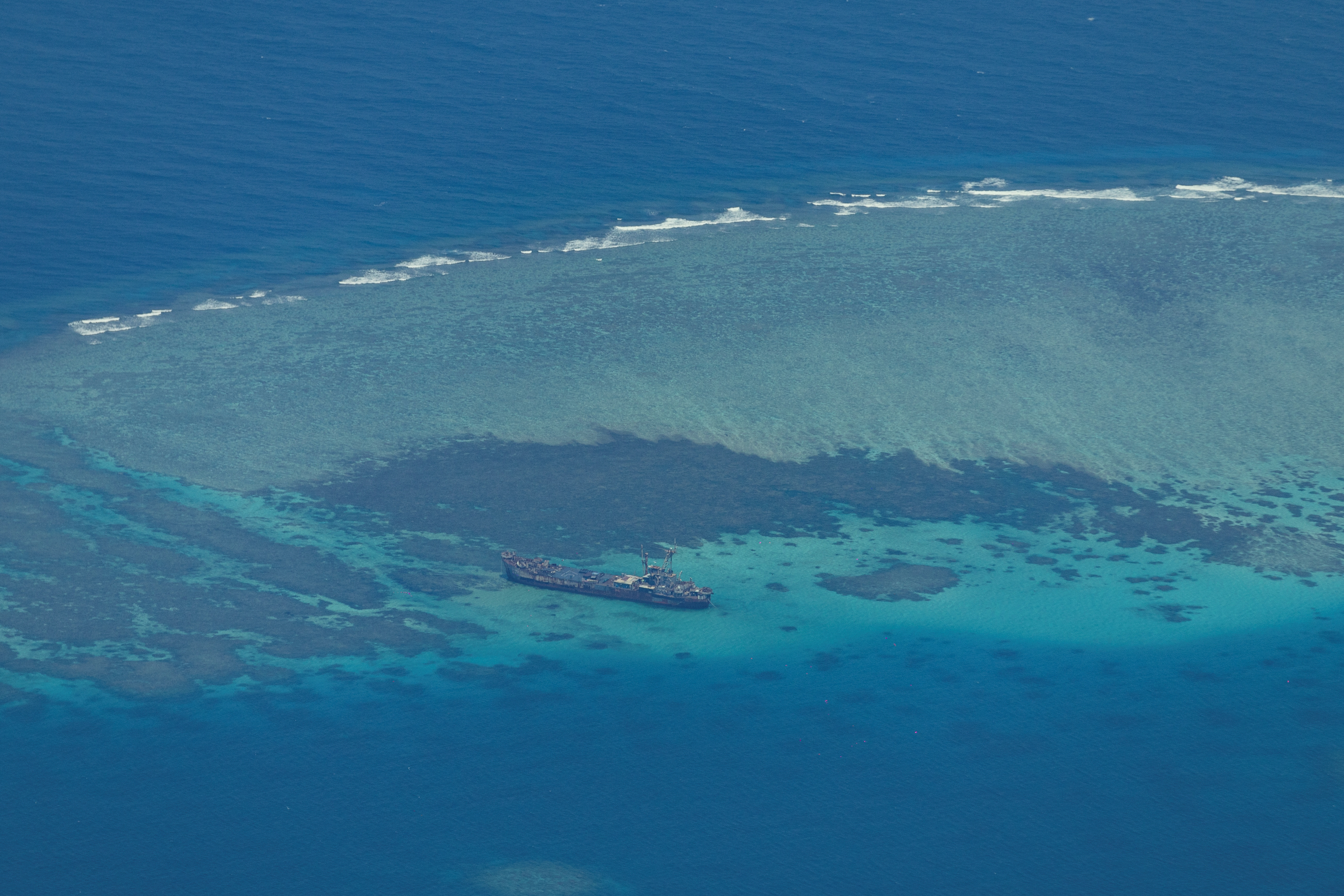
An aerial view shows the BRP Sierra Madre on the disputed Second Thomas Shoal ship, known locally as Ayungin, in the South China Sea, March 9, 2023./File photo Obtaining licensing rights
BEIJING (Reuters) – The Philippines and China traded accusations on Sunday over the collision of two of their ships in disputed waters in the South China Sea, as tensions rose over sovereignty claims over the vital waterway.
The Philippine Coast Guard accused China of launching water cannons and ramming the resupply ships and a Coast Guard ship, causing “serious engine damage” to one of them, while the Chinese Coast Guard said the Philippine ship intentionally rammed its ship.
China claims almost the entire South China Sea, a corridor for more than $3 trillion in annual shipborne trade, including parts claimed by the Philippines, Vietnam, Indonesia, Malaysia and Brunei. The Permanent Court of Arbitration said in 2016 that China’s claims had no legal basis.
Beijing and Manila are playing a cat-and-mouse game over the unoccupied Second Thomas Shoal in the Philippines’ exclusive economic zone when the Philippines deploys resupply missions to Filipino soldiers living aboard an old warship that was deliberately ran aground in 1999 to protect Manila’s maritime claims.
The shoal is part of what is known internationally as the Spratly Islands.
On Saturday, the Philippines accused China of “unlawful and aggressive actions” by China by firing water cannons at a government fishing vessel operated by civilians, a move Beijing described as legitimate “control measures.”
In Sunday’s incident, the Chinese Coast Guard said in a statement that two Filipino ships, ignoring repeated warnings, “illegally entered the waters adjacent to the Renai Reef in the Nansha Islands without the approval of the Chinese government.”
It said that the ship Onaiza May 1 “made a sudden, dangerous, and unprofessional turn, and deliberately collided with Chinese Coast Guard Ship No. 21556.” She added that the Philippine side bears full responsibility.
“M/L Kalayaan sustained severe engine damage. Contrary to the Chinese Coast Guard’s misinformation, the CCG vessel UM1 was rammed,” Philippine Coast Guard spokesperson Jay Tareella posted on social media platform X.
A Philippine government task force condemned China’s “latest unjustified acts of coercion and dangerous maneuvers against its legitimate and routine resupply mission.” She said in a statement that China’s behavior “raises serious doubts about the sincerity of its calls for peaceful dialogue.”
The National Task Force for the Western Philippine Sea said a Coast Guard vessel was towing the Calayan to Palawan province and that the Coast Guard vessel BRP Cabra “sustained damage to its mast after it was directly targeted with full water cannon force.”
“China’s aggression undermines regional stability in a challenge to a free and open Indo-Pacific,” US Ambassador to Manila Mary Kay Carlson posted on X.
About 200 Filipino fishermen, youth leaders and civil society organizations joined a Christmas mission to the region, organized by the Aten Ito (“This Is Ours”) network, a civilian-led network that asserts the country’s rights in the South China Sea.
The group said on Sunday that ten fishing boats decided to withdraw because they “erred in caution.”
(Reporting by Michael Flores, Colin Howe and Eve Wu – Prepared by Mohammed for the Arab Bulletin) Editing by William Mallard and Miral Fahmy
Our standards: Thomson Reuters Trust Principles.

“Unapologetic tv specialist. Hardcore zombie trailblazer. Infuriatingly humble problem solver.”






/cloudfront-us-east-2.images.arcpublishing.com/reuters/XBHSKTXVTNMXTHN6JEZDIGTLXI.jpg)
More Stories
Stand News editors convicted in sedition case
Latest Baysail sinking: Mike Lynch’s wife ‘didn’t want to leave boat without family’ as crew investigated
WFP halts Gaza operations after repeated shooting at aid vehicle